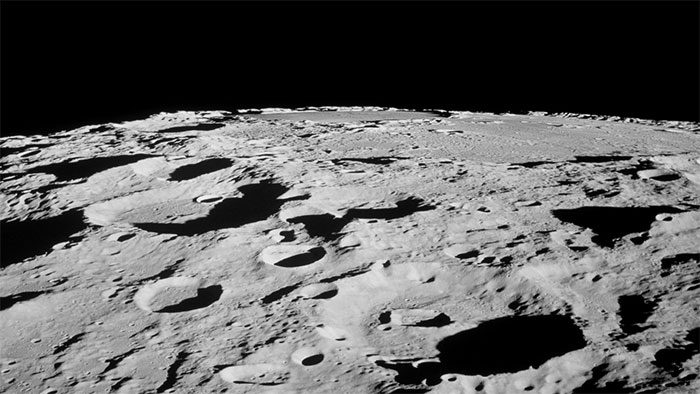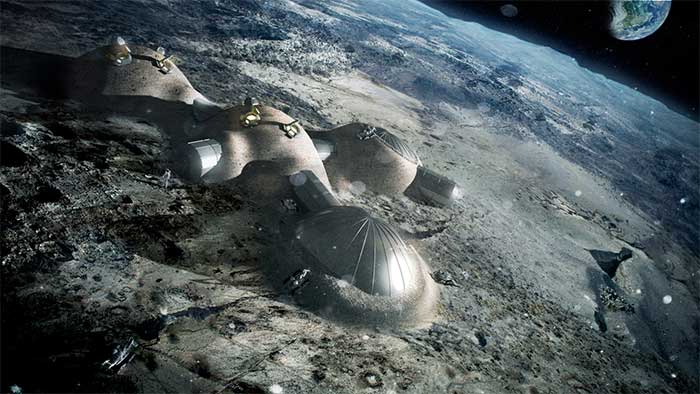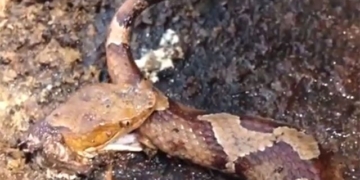The Moon was once thought to be uninhabitable and devoid of life, but this perception may change in the future.
The Moon is a vacuum environment with a gravitational force too weak to support an atmosphere, allowing space debris to directly and rapidly impact its surface.
The Moon experiences intense radiation, with daytime temperatures reaching up to 127 degrees Celsius, while nighttime temperatures drop to -183 degrees Celsius, and there is no liquid water!
Although there are always those who question why extraterrestrial life should be defined by life on Earth, if we do not seek life based on Earth’s standards, then all conjectures will be completely unfounded and merely wild imaginations.

The Moon’s South Pole has many craters and extremely rugged terrain, very different from the relatively flat, cooled lava regions explored by Apollo astronauts in the 1970s. However, the deep craters around the poles may hold the “key” to building self-sustaining lunar bases, specifically frozen water hidden in the permanently shadowed regions of the deepest craters. (Photo: Science).
According to a report released by NASA, Artemis 3 will be launched to the Moon in 2025, which could help NASA planetary scientist Prabal Saxena validate his wild conjectures. He believes that microorganisms brought from Earth during previous space flights may be able to survive in the permanently shadowed, frigid craters at the Moon’s south pole.
Although the scientific community currently believes that the Moon is lifeless and lacks some of the Earth-like habitability features found on other planets, Saxena is convinced that the far side of the Moon is a potentially habitable area and could provide a safe haven for microbial life. Regarding the origin of these microorganisms, Saxena believes they are not indigenous species but rather were transported and survived through multiple human explorations of the Moon.
Microbial life may exist on the Moon and could have been transported there by various lunar landers, so Artemis 3 will focus on exploring the far side of the Moon.

Artemis 3 is a pivotal mission in NASA’s 21st Century Artemis program, aimed at returning humans to the Moon. Unlike the lunar landings of the 1960s and 1970s, NASA hopes this mission will allow for a more extensive and detailed exploration of Earth’s natural satellite, transforming the Moon into a research hub for scientists and a “way station” for future journeys to Mars. (Photo: Science).
As a region of the Moon that humans have not yet set foot on, we know there is ice on the far side; some researchers believe this ice could be used for water and other resources to facilitate the construction of lunar bases. It is entirely possible that these ice layers serve as a safe haven for microorganisms, as harmful solar radiation cannot reach these areas.
Saxena is very confident in his hypothesis; however, he remains cautious and believes that even if no microorganisms are discovered on the far side of the Moon, it does not mean they will not exist in the future! As long as humans continue to explore the Moon, microorganisms could establish a foothold, surviving and adapting to the lunar environment, and eventually beginning to grow and reproduce.

Experts believe that if microorganisms exist on the Moon, they may have arrived there via extraterrestrial meteorites. However, it is also possible that these microorganisms originated from Earth, possessing remarkable resilience to harsh conditions, and went along with the Apollo 11 lunar lander in 1969. (Photo: Science)
In reality, the claims made by NASA planetary scientist Prabal Saxena are merely incomplete speculations, lacking any substantial evidence. Compared to scientists who are considered optimistic like him, many researchers, such as Heather Graham, an organic geochemist at NASA’s Goddard Space Flight Center, pay more attention to evidence.
Graham told Space: “We consider Earthlings to be the most likely ‘messengers’ (of microorganisms) to bring life to the Moon. Of course, this is based on abundant data we have about the history of exploration and human impact records on the Moon during the 20th century.”
Even if microorganisms do not currently exist on the Moon, those that can resist radiation, such as Tardigrades (scientific name: Macrobiotus sapiens) or Deinococcus radiodurans, may proliferate through lunar exploration activities in the Artemis program.
Heather Graham believes that these microorganisms not only could survive the journey but also have the potential to thrive on the Moon.
This is indeed a very timely and intriguing idea, but ultimately, without reliable data, it can only be regarded as speculation.


















































